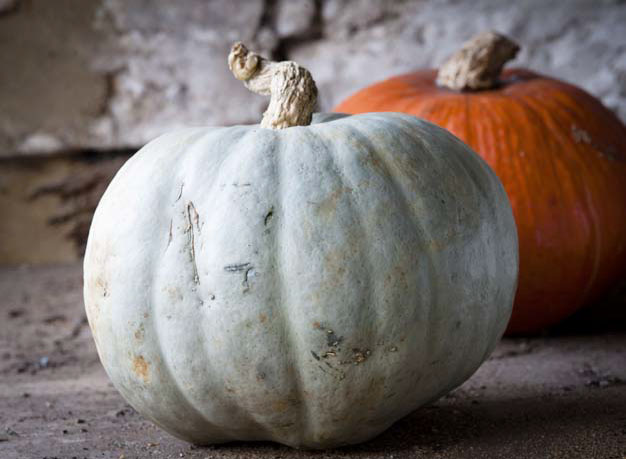
From aesthetics to taste – Catherine Thomas explores the many delights of a winter harvest.
I may be unusual but I find the winter vegetable garden beautiful. I confess that this may be because the pressure is off – no job is so vital that it can’t wait a week, a month, even till spring – or so it seems, at least. But it is also because some vegetables are among our most handsome plants – and the ones I have in mind are also very hardy. They would improve the looks of any winter garden, but are usually to be found in humble allotments and vegetable plots.
I’m not suggesting that you should choose good looks over flavour – obviously taste is all-important in a vegetable. I just want to encourage you to see them as things of beauty as well as nourishment.
One of the characteristics of hardy vegetable plants is strong architecture. Take the humble kale plant: it stands upright throughout winter storms; it has many forms, from traditional grey-green to deep crimson curly-leaved and jaggedleaved Russian Red, to tall, dark and handsome Cavalo Nero (also known as Nero di Toscana). These varied leaf shapes rimed with frost are stunningly beautiful. The taste is equally robust and can be combined with other strong flavours. I like to stir fry it with sun-dried tomatoes and garlic. Brussels sprouts, so named because they became extremely popular in the Low Countries from the 13th century, are traditional Christmas fare. The plants are too bulbous to be handsome, more portly gentleman than lean and clean cut, but they are fully hardy and the dark red form Red Ball is very striking.
Leeks are fine-looking plants, with their blue-grey leaves and geometric form. They may droop briefly after a frost but rarely succumb entirely.
Dazzling colour
Other plants have colour that would enhance any flower garden. Rainbow chard, in a variety of shades from white and golden yellow through to ruby red, is slightly less hardy than its relative leaf beet (of which more later) but makes up for it in dazzling colour and large glossy leaves. Beetroot is closely related but has been bred for its swollen root rather than its leaves, although the young leaves are good to eat raw or cooked, too. Together with leaf beet, these are some of the easiest plants to grow from seed, with germination almost guaranteed. In fact, leaf beet self seeds for me so reliably I have not had to buy seed for several years. Other welcome self seeders are rocket, land cress and parsley, all of which are winter hardy. Simply pull out the seedlings which appear in inconvenient places. Many of the popular and easy oriental salad leaves are hardy, including mizuna, shungiko and spicy red mustard, which has spread itself generously over my allotment.
Root vegetables that can be left in the ground over winter are a solution to storage problems in small, warm houses, and a boon to busy gardeners. Parsnips, beetroot and carrots are hardy enough to come unscathed through all but the hardest frosts. A snug blanket of leafmould or compost will protect them in a long freezing spell.
Many cold-tolerant vegetables, including leaf vegetables, parsnips, carrots, beetroot and celeriac, are sweeter after the first frost. They convert their stores of starch to sugars in response to cold, probably because it helps to protect cells from freezing.
I spent the autumn squirreling away my harvest of fruit and vegetables into freezers, bottles and airy cupboards so, together with those I continue to harvest once a week through the winter, I find I hardly need to shop at all. Apples, potatoes, onions, pumpkins and squashes last till well into the New Year. It’s all so satisfying that I feel quite smug.
Recipe for a substantial salad:
Roast butternut squash and borlotti
bean salad with goat’s cheese and
onion marmalade
1 butternut squash (or pumpkin)
250g cooked borlotti beans
250g goat’s cheese
Onion marmalade
Mixed salad leaves
Virgin olive oil
Aged balsamic vinegar
Black pepper
Peel and chop the squash, discarding the inner seeds. Roast, drizzled with olive oil and black pepper, until tender. Scatter the salad leaves onto the serving plate. Arrange the cooked squash and borlotti over the salad. Crumble the goat’s cheese over, then drizzle the onion marmalade around. Finish with a little olive oil and balsamic vinegar.
Taken from A Cook and a Painter: Recipes and Paintings from Fisherton Mill by Michael Fox and Kate Lowe

